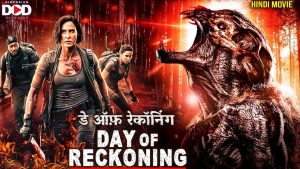Art /Entertainment
The Growing Popularity of Interactive Content

Introduction
In the digital age, content is king. However, the form that content takes has evolved significantly over the years. One of the most notable trends in recent times is the growing popularity of interactive content. This form of content is not only engaging but also offers a dynamic way for audiences to interact with information, making it more memorable and impactful. In this article, we will delve into the various aspects of interactive content, exploring its benefits, types, and the reasons behind its increasing popularity.
What is Interactive Content?

Image by: Google.com
Interactive content refers to content that requires active engagement from the audience, rather than passive consumption. Unlike traditional content, which is static and linear, interactive content is dynamic and often personalized. It can take various forms, including quizzes, polls, interactive infographics, calculators, and more. The primary goal of interactive content is to engage users in a way that traditional content cannot, thereby enhancing their experience and retention of information.
Benefits of Interactive Content
1. Enhanced Engagement
One of the most significant benefits of interactive content is its ability to engage users. Traditional content, such as articles and videos, often requires passive consumption. In contrast, interactive content demands active participation, which can significantly increase user engagement. When users interact with content, they are more likely to remember the information and share it with others.
2. Personalization
Interactive content often allows for a high degree of personalization. For example, a quiz can adapt its questions based on the user’s previous answers, providing a tailored experience. This level of personalization can make the content more relevant and interesting to the user, thereby increasing its effectiveness.
3. Data Collection
Interactive content provides a unique opportunity for data collection. When users engage with interactive elements, they often provide valuable information that can be used for marketing and analytics purposes. This data can help businesses understand their audience better and tailor their strategies accordingly.
4. Improved Learning and Retention
Interactive content can significantly improve learning and retention. When users actively participate in the content, they are more likely to remember the information. This is particularly useful in educational settings, where interactive elements can make learning more engaging and effective.
5. Increased Share ability
Interactive content is often more shareable than traditional content. Users are more likely to share quizzes, polls, and interactive infographics with their friends and family, thereby increasing the reach of the content. This can be particularly beneficial for brands looking to expand their audience.
Types of Interactive Content

Image by: Google.com
1. Quizzes and Polls
Quizzes and polls are among the most popular forms of interactive content. They are easy to create and can be highly engaging for users. Quizzes can be used for various purposes, such as testing knowledge, personality assessments, and more. Polls, on the other hand, can be used to gather opinions and feedback from the audience.
2. Interactive Infographics
Infographics are a popular way to present information visually. When these infographics are made interactive, they can become even more engaging. Interactive infographics often include clickable elements, animations, and other features that allow users to explore the information in a more dynamic way.
3. Calculators and Tools
Calculators and tools are another popular form of interactive content. These can be used to provide personalized information based on user input. For example, a mortgage calculator can help users estimate their monthly payments based on their loan amount, interest rate, and other factors. These tools can provide real value to users, making them more likely to engage with the content.
4. Interactive Videos
Videos are already a highly engaging form of content, but they can be made even more so by adding interactive elements. Interactive videos often include clickable hotspots, branching scenarios, and other features that allow users to interact with the video in real-time. This can make the viewing experience more engaging and memorable.
5. Assessments and Surveys
Assessments and surveys are another effective form of interactive content. These can be used to gather information from users, test their knowledge, or provide personalized recommendations. The interactive nature of assessments and surveys can make them more engaging than traditional forms of data collection.
The Rise of Interactive Content

Image by: Google.com
1. Technological Advancements
The rise of interactive content can be attributed to several factors, one of which is technological advancements. The development of new technologies, such as HTML5, JavaScript, and CSS3, has made it easier to create interactive content. These technologies allow for the creation of dynamic and engaging content that can be easily integrated into websites and other digital platforms.
2. Changing Consumer Preferences
Consumer preferences have also played a significant role in the rise of interactive content. Today’s consumers are more tech-savvy and have shorter attention spans. They prefer content that is engaging, interactive, and personalized. Interactive content meets these preferences, making it more appealing to modern audiences.
3. Increased Competition
The digital landscape is highly competitive, and businesses are constantly looking for new ways to stand out. Interactive content provides a unique way to differentiate from competitors. By offering a more engaging and personalized experience, businesses can attract and retain more customers.
4. Social Media Influence
Social media has also contributed to the popularity of interactive content. Platforms like Facebook, Instagram, and Twitter have made it easier for users to share interactive content with their networks. This has increased the visibility and reach of interactive content, making it more popular among both users and businesses.
5. Data-Driven Marketing
The rise of data-driven marketing has also played a role in the growth of interactive content. Businesses are increasingly using data to inform their marketing strategies, and interactive content provides a valuable source of data. By engaging users in interactive elements, businesses can gather valuable insights that can be used to improve their marketing efforts.
Challenges of Interactive Content

Image by: Google.com
1. Cost and Time
One of the main challenges of creating interactive content is the cost and time involved. Developing high-quality interactive content often requires specialized skills and tools, which can be expensive. Additionally, creating interactive content can be time-consuming, particularly if it involves complex animations or programming.
2. Technical Issues
Interactive content can also present technical challenges. Ensuring that the content works seamlessly across different devices and browsers can be difficult. Additionally, interactive content often requires a stable internet connection, which may not be available to all users.
3. User Experience
While interactive content can be highly engaging, it can also be overwhelming if not designed properly. Ensuring a positive user experience is crucial. This involves creating intuitive and user-friendly interfaces, providing clear instructions, and avoiding excessive use of interactive elements.
4. Measuring Success
Measuring the success of interactive content can also be challenging. Traditional metrics, such as page views and time on page, may not provide a complete picture of user engagement. Businesses need to develop new metrics and analytics tools to measure the effectiveness of their interactive content.
Best Practices for Creating Interactive Content

Image by: Google.com
1. Know Your Audience
Understanding your audience is crucial when creating interactive content. This involves identifying their preferences, interests, and pain points. By understanding your audience, you can create content that is relevant and engaging to them.
2. Set Clear Goals
Setting clear goals is essential for creating effective interactive content. This involves identifying what you want to achieve with your content, whether it’s increasing engagement, collecting data, or driving conversions. Clear goals can help guide the content creation process and ensure that the content is aligned with your objectives.
3. Keep It Simple
While interactive content can be highly engaging, it’s essential to keep it simple. Overloading users with too many interactive elements can be overwhelming and detract from the user experience. Focus on creating intuitive and user-friendly interfaces that are easy to navigate.
4. Provide Value
Interactive content should provide real value to users. This can be in the form of personalized information, entertainment, or educational content. By providing value, you can increase user engagement and ensure that users are more likely to share the content with others.
5. Test and Optimize
Testing and optimizing your interactive content is crucial for ensuring its effectiveness. This involves gathering feedback from users, analyzing data, and making necessary adjustments. By continuously testing and optimizing your content, you can improve its performance and achieve better results.
Conclusion
The growing popularity of interactive content is a testament to its effectiveness in engaging users and providing a dynamic and personalized experience. As technological advancements continue to make it easier to create interactive content, and as consumer preferences continue to evolve, we can expect to see even more innovative and engaging forms of interactive content in the future. By understanding the benefits, types, and best practices for creating interactive content, businesses can leverage this powerful tool to enhance their marketing efforts and achieve their goals.
Art /Entertainment
How This Small 8-oz Mason Jar Is Changing the Entire Candle Industry

Introduction
In a world where trends shift faster than ever, one product has quietly risen to become a powerhouse in the candle market: the humble 8-oz Mason jar candle. What started as a simple, nostalgic glass container has now evolved into a best-selling size and a major driver behind today’s booming candle industry.
From luxury lifestyle brands to small home-based entrepreneurs, everyone is embracing the 8-oz Mason jar and for good reason. Its appeal goes far beyond size. It blends practicality, aesthetics, affordability, and brandability in a way no other candle format can match.
So how is this small jar reshaping an entire industry? Let’s break it down.
How This Small 8-oz Mason Jar Is Changing the Entire Candle Industry
1. The 8-oz Mason Jar Fits Today’s ‘Minimalist-Luxury’ Trend Perfectly
Consumers in 2025 want products that feel premium, simple, and intentionally designed. The 8-oz Mason jar checks all three boxes.
It has the clean lines, transparent body, and classic charm that align perfectly with the minimalist-luxury trend dominating Instagram, Pinterest, and modern home décor. Whether displayed on bookshelves, bedside tables, or kitchen counters, its aesthetic blends effortlessly into any style:
- Scandinavian
- Boho
- Modern farmhouse
- Japandi
- Urban minimalist
Brands love this because it gives them a product that feels high-end without needing an expensive custom mold or complex packaging. The jar itself already looks premium, and when paired with the right label design, it becomes a branded artwork.
2. Ideal Size for Scent Throw & Burn Time
The 8-oz size hits the sweet spot between performance and convenience.
- Perfect for slow, even burning: Its wide mouth and deeper jar shape allow smooth, controlled melting. This prevents tunneling and offers an even burn from start to finish.
- Outstanding scent throw: The surface area is perfect for distributing fragrance across small and medium-sized rooms.
- Long-lasting without overwhelming: Customers get 40–50 hours of burn time good value without committing to an oversized candle.
This balance of burn time + fragrance performance is one of the biggest reasons why 8-oz Mason jars are consistently top-sellers in both retail stores and online shops.
3. The Best Size for Private Label & Small Businesses
For private label brands, boutiques, and new entrepreneurs, the 8-oz Mason jar is a dream product. It minimizes risk while maximizing profit.
Why small brands love it:
- Affordable to produce
- Easy to customize
- Versatile for multiple collections
- Low shipping costs
- Perfect for trial orders or limited editions
You can create:
- holiday specials
- seasonal drops
- scent-specific collections
- collaborations
- gift bundles
…all without needing to invest in larger, riskier inventory.
High profit margins
This candle size allows brands to price anywhere between $12 $28, depending on the target audience. Because the jar cost is low and the production process is efficient, margins remain strong especially for boutique brands.
4. The 8-oz Mason Jar Has Become Instagram & TikTok Friendly
TikTok and Instagram Reels have changed how products go viral and the 8-oz Mason jar candle is one of the most “share-worthy” candle types ever.
Why?
- Aesthetic pouring videos: The transparency of the jar shows the creamy white wax beautifully during the pour.
- Label transformation clips: Creators love showing before/after label upgrades.
- Packaging ASMR: The small size is perfect for aesthetic packaging videos, which attract millions of views.
- DIY + small business content: The jar’s accessibility makes it ideal for creators who showcase candle-making tutorials.
This social media exposure has skyrocketed demand. Consumers now associate 8-oz candles with quality craftsmanship, authentic branding, and small business charm even when mass brands sell them.
5. A Perfect Size for Gifting:A Major Sales Boost
Giftability plays a huge role in candle sales, especially during:
- Weddings
- Housewarmings
- Festivals
- Corporate gifting
- Holiday seasons
The 8-oz candle is budget-friendly enough for bulk gifting, yet premium enough to feel special. Brands can sell them as:
- personalized wedding favors
- branded corporate gifts
- holiday bundles
- self-care boxes
- subscription box items
Since candles are one of the most gifted products in the world, this size wins the market repeatedly.
6. Practical for Shipping: A Game Changer for E-Commerce
The candle industry has massively shifted online and logistics matter more than ever. The 8-oz Mason jar excels because:
- It’s lightweight compared to larger candles
- Less prone to breakage
- Cheaper shipping for customers and brands
- Fits standard mailer boxes
- Easy to pack in multiples for bundle deals
In e-commerce, even small reductions in shipping weight translate into huge annual savings. That alone has pushed many brands to make the 8-oz jar their top-selling SKU.
7. Allows Brands to Offer More Scents Easily
Consumers love variety especially in home fragrances. Instead of committing to one large candle, they prefer buying multiple smaller ones to explore different scents.
The 8-oz Mason jar allows brands to create:
- 12–40 scent collections
- Limited editions
- Seasonal drops
- Custom fragrance lines
- Collab-themed releases
This flexibility helps brands stay relevant all year round.
A big part of the candle industry’s success today comes from fast-moving fragrance trends, and the 8-oz size adapts to them perfectly.
8. Enhances Brand Identity Through Custom Packaging
The jar might be small, but its branding potential is huge.
Brands can customize:
- Label shape
- Label color
- Logo size
- Jar cap color
- Box packaging
- Stickers
- Wrap bands
With the rise of private label manufacturing and 3D configurators (like those at PrivateLabelCandles.com), brands now have unprecedented control in designing a candle that reflects their story.
Small jar, big brand presence.
9. Sustainability & Reusability: A Major Consumer Preference
Modern consumers care deeply about:
- waste reduction
- reusable containers
- eco-friendly materials
Mason jars check all the boxes.
After the candle finishes, customers reuse the jar for:
- storage
- décor
- DIY crafts
- planters
- spice containers
- pen holders
This reusability adds emotional and functional value, making customers feel better about their purchase — and more connected to the brand.
10. Affordable for Beginners, Profitable for Experts
The 8-oz Mason jar acts like the gateway product of the candle industry.
Beginners love it because:
- Low investment
- Easy to learn
- Forgiving in pouring mistakes
- Suitable for small batches
Established brands love it because:
- Consistent best-seller
- Perfect for wholesale
- High repeat purchase rate
- Great for subscription boxes
No matter where a brand is in its journey, this jar works.
Conclusion: Small Jar, Big Impact
The 8-oz Mason jar candle has become far more than just a product it’s a movement shaping the candle industry’s future.
It’s a perfect balance of:
- size
- aesthetics
- performance
- affordability
- brandability
- trend alignment
…has made it a universal bestseller, from handmade creators to major private-label manufacturers.
In a fast-changing market, the 8-oz Mason jar stands out as a timeless product that continues to drive innovation, creativity, and profitability. And as we move deeper into 2025, its influence is only growing stronger.
For more blogs: visit here
Art /Entertainment
DOD Highlights: Hollywood Movies in Telugu Dubbed List

Introduction
Looking for an edge-of-the-seat experience with Hollywood movies in Telugu dubbed? Dimension On Demand (DOD) brings international blockbusters closer to Indian audiences with a growing Hollywood movies in Telugu dubbed list that blends action, sci-fi, thrill, and drama—all in your language. Whether it’s high-tech battles, espionage missions, or war-torn conflicts, DOD ensures every story feels as gripping as watching in theaters.
By offering Hollywood movies in Telugu dubbed, DOD bridges the global-local gap. The platform ensures Telugu-speaking audiences can enjoy the performances of international stars like Zina Blahusova, Louis Fan, Baltazar Ploteau, and Ji Hao—without missing the emotion, thrill, or drama of the original. Let’s explore the Hollywood movies in Telugu dubbed list you can stream today.
Why Are Hollywood Movies Dubbed in Telugu?
The practice of dubbing Hollywood movies into regional languages is not new. With the increasing popularity of Hollywood films in India, especially in the Telugu-speaking states, there has been a growing need to provide these movies in languages that audiences are most comfortable with. Telugu-speaking viewers, who have an insatiable appetite for cinema, want to enjoy the latest global hits without language barriers.
Dubbing Hollywood movies into Telugu also makes them more accessible, allowing for a wider reach. Telugu-speaking families, children, and elderly viewers, who may not be comfortable with English, can enjoy these films without missing out on their favorites. Additionally, dubbing adds a local flavor to the content, making it more relatable for the audience.
DOD Highlights: Hollywood Movies in Telugu Dubbed List

Image by: Yandex.com
1. Unstoppable: Sci-Fi Action at Its Peak
- Director: Feng Yang
- Stars: Zina Blahusova, Louis Fan, Ji Hao
In the futuristic world of 2080, Earth becomes a refuge for immigrants before a meteor shower changes everything. The Bologna meteorite mutates ordinary people into terrifying beings spider-women and men with pink hair creating chaos across the planet. Stepping up against this apocalyptic threat is Louis Fan, the martial arts star who brings raw energy to the screen. His action-packed sequences make Unstoppable a must on the Hollywood movies in Telugu dubbed list.
Zina Blahusova shines with emotional depth, balancing the high-stakes action with human resilience, while Ji Hao adds intensity as the unexpected hero from China who dares to take on the mutated army. With breathtaking VFX and fast-paced storytelling, Unstoppable is not just a sci-fi flick—it’s a global spectacle.
Watching this in Telugu on DOD transforms every explosion, scream, and heroic strike into an immersive experience. Among Hollywood movies in Telugu dubbed, Unstoppable is a cinematic adrenaline rush that should not be missed.
2. Guy Manley: Super Spy: Espionage Meets Action
- Director: David Andersson
- Stars: Baltazar Ploteau, Anton Sjölund, Milton Björnegren
The spy genre gets a fresh jolt with Guy Manley: Super Spy. Ex-spy Guy Manley, played by Baltazar Ploteau, is forced out of retirement for one final mission—an assassination that could shift political power forever. Tasked with eliminating Rich Cash to prevent him from becoming mayor, Guy is pulled into a deadly conspiracy that tests loyalty, morality, and skill.
Baltazar Ploteau dominates the screen with a rugged intensity, while Anton Sjölund and Milton Björnegren deliver strong performances that heighten the intrigue. Fans of international espionage thrillers will find Guy Manley: Super Spy one of the strongest entries in the Hollywood movies in Telugu dubbed list.
DOD ensures that Telugu audiences get the full flavor of its suspense and action, with dubbing that captures every sly exchange, tense standoff, and brutal fight. For anyone browsing Hollywood movies in Telugu dubbed, this title is a perfect mix of mind games and muscle.
3. Cruel War (2024): Conflict, Betrayal, and Survival
- Director: Guan Yue
- Stars: Lin Xiang, Yan Xin, Li Wenyao
Cruel War (2024) brings raw intensity to the Hollywood movies in Telugu dubbed list with its gripping mix of science, betrayal, and survival. Yan Xin, a scientist experimenting with gene-edited rubber seeds, travels to Yinfan Island hoping to cultivate a new world. But with drug lord Li Wenyao pulling strings in the shadows, her mission spirals into violence and war.
Lin Xiang, a security expert with a personal stake, steps in to protect Yan Xin. Their fractured past adds emotional weight, while the looming conflict with Li Wenyao creates a relentless atmosphere of danger. With conspiracies, firefights, and an ultimate showdown between good and evil, Cruel War cements itself as one of the most impactful Hollywood movies in Telugu dubbed available today.
DOD’s dubbing brings every emotional outburst and explosive confrontation alive for Telugu audiences. For those searching for intense Hollywood movies in Telugu dubbed list, Cruel War is a top recommendation.
Why Watch Hollywood Movies in Telugu Dubbed on DOD?
- Actor-Oriented Access: Experience international stars like Louis Fan, Zina Blahusova, and Eric Roberts in a language you connect with.
- Genre-Specific Thrills: From sci-fi and espionage to war-driven drama, DOD’s Hollywood movies in Telugu dubbed list is packed with adrenaline.
- Professional Dubbing: Studio-quality dubbing ensures every performance feels natural in Telugu.
- Seamless Streaming: Watch anywhere, anytime, with optimized performance across devices.
- Curated Library: DOD brings together not just action and sci-fi, but also the Latest Hollywood movies in Hindi, ensuring variety for every viewer.
Stream now the Hollywood Movies in Telugu Dubbed List on DOD
- Unstoppable
- Guy Manley: Super Spy
- Cruel War (2024)
These Hollywood movies in Telugu dubbed list ensure you always have access to stories that entertain, thrill, and inspire now with the ease of Telugu dubbing.
The Appeal of Dubbed Hollywood Movies in Telugu
The popularity of Hollywood films in Telugu-speaking regions can be attributed to several factors:
1. Wider Audience Reach
By dubbing Hollywood films in Telugu, filmmakers ensure that their content reaches a larger, more diverse audience. Telugu-speaking viewers can now enjoy global cinematic masterpieces without having to rely on subtitles or their understanding of English.
2. Regional Appeal
Dubbing adds a local flavor to Hollywood films, making them more relatable and immersive for the audience. The addition of regional dialects and expressions can also enhance the emotional connection viewers feel with the film.
3. Family-Friendly Content
Many Hollywood films are family-oriented, and the dubbing process makes it easier for families to watch movies together. Telugu-dubbed films are particularly popular among young children who may not yet be able to follow English dialogue.
4. Globalized Cinema
As the world becomes more interconnected, the demand for international content grows. Telugu-speaking audiences have embraced Hollywood films, and dubbing allows them to enjoy the best of both worlds—international cinema in a language they understand.
Conclusion
Hollywood movies dubbed in Telugu have opened up a world of entertainment for regional audiences, making global cinematic experiences more accessible and enjoyable. From action-packed thrillers like Avengers to animated classics like Frozen, these films provide endless entertainment for all ages.
With the increasing popularity of Hollywood films in India, especially in Telugu-speaking states, the demand for more dubbed content is only set to grow. As the film industry continues to evolve, we can expect even more iconic Hollywood movies to be dubbed into Telugu, giving fans an exciting and immersive cinematic experience in their native language.
So, whether you are a fan of superheroes, animated adventures, or heartwarming dramas, there’s a world of Hollywood films waiting for you in Telugu. Enjoy the magic of cinema with these unforgettable films dubbed into your language!
Final Takeaway
From sci-fi epics to spy thrillers and war-driven sagas, DOD’s Hollywood movies in Telugu dubbed list delivers nonstop excitement. Whether it’s the futuristic chaos of Unstoppable, the espionage intrigue of Guy Manley: Super Spy, or the gripping survival in Cruel War (2024), these films bring Hollywood closer to Telugu-speaking audiences.
Stop searching endlessly stream Hollywood movies in Telugu dubbed on DOD today and experience global cinema like never before.
Art /Entertainment
English Dubbed Movies on DOD: Horror and Action Thrills Await

Introduction
The thrill of Hollywood doesn’t have to be locked away in just one language. With English dubbed movies, global blockbusters now reach every corner of India, letting audiences experience the same adrenaline rush, chilling suspense, and jaw-dropping action sequences in their own language. DOD takes this one step further, delivering genre-perfect dubs that capture not only the words but also the intensity, emotions, and atmosphere of each performance.
Whether you’re into sci-fi showdowns, zombie-filled nightmares, or supernatural thrillers, DOD’s carefully curated collection of English dubbed movies ensures you won’t miss a beat. Let’s dive into some of the most gripping films currently available — each one an electrifying reason to explore the world of Dubbed Movies English.
Decade of the Dead: A Zombie Apocalypse Reborn

Image by: Yandex.com
When it comes to survival horror, Decade of the Dead raises the stakes to terrifying new heights. Directed by Adam Deyoe, known for his sharp work in genre cinema, and Fairai Branscombe Richmond, the film is an intense blend of horror, action, and raw human drama.
At the heart of the movie is Jenna Leigh Green, best remembered for her cult-favorite role in Sabrina the Teenage Witch. Alongside her, Sean Patrick Thomas, who made audiences cheer in Save the Last Dance, and Shane Johnson, celebrated for his chilling presence in Power, deliver powerhouse performances.
The plot sets itself a decade after a devastating zombie outbreak. Survivors think they’ve finally found peace on a tropical island. But paradise quickly turns sinister when they discover a cult worshiping zombies, with terrifying plans to dominate the wasteland.
On DOD, the English dubbed movies version amplifies every moment of dread, from the growl of the undead to the whispered schemes of cult leaders. It’s an apocalyptic experience no fan of Dubbed Movies English should miss.
Day of Reckoning: Humanity’s Final Stand

Image by: Yandex.com
For sci-fi and horror lovers, Day of Reckoning is an absolute must-watch. Directed by Joel Novoa, who also worked on the acclaimed Arrow TV series, the movie combines supernatural suspense with high-octane action.
The cast includes Heather McComb, known for her gripping role in Party of Five, Jackson Hurst, loved for Drop Dead Diva, and Jay Jay Warren, one of the rising talents of Hollywood horror. Together, they create a survival story that pits humans against monstrous creatures from the underworld.
Set fifteen years after a horrific invasion, the Earth once again faces annihilation. The “Day of Reckoning” survivors must band together in a desperate attempt to repel the forces of darkness. With unrelenting battles, nightmarish creatures, and an epic fight for survival, it’s a film that resonates deeply with fans of action-heavy horror.
Thanks to DOD, the English dubbed movie version ensures that Indian audiences can experience the same pulse-pounding urgency — whether you’re watching in Hindi, Tamil, Telugu, Bangla, or sticking with English. This is more than just another survival story; it’s an event.
The Echo: A Haunting You Won’t Escape

Image by: Yandex.com
Switching gears from epic battles to spine-tingling dread, The Echo proves that not all horrors scream; some whisper their way under your skin. Directed by Yam Laranas, who helmed the internationally recognized thriller The Road, this film builds a suffocating atmosphere of fear and inevitability.
Jesse Bradford, widely praised for Bring It On and Swimfan, leads the cast with a gripping performance as an ex-con trapped in a cursed apartment building. Alongside him, Amelia Warner and Carlos Leon add depth and haunting realism to the narrative.
The story follows a man trying to rebuild his life after prison, only to discover his new home harbors a domestic nightmare that spirals into a supernatural curse. The tension is relentless, blending emotional vulnerability with chilling terror.
On DOD, The Echo shines as one of the standout English dubbed movies, with the dubbing adding weight to every scream, every silence, and every eerie footstep. For those who crave horror that lingers long after the credits, this is a must-watch.
Why English Dubbed Movies on DOD Stand Out
Dubbing isn’t just about translating words it’s about preserving intensity, performances, and atmosphere. On DOD, English dubbed movies aren’t diluted versions of their originals. Instead, they’re immersive experiences tailored for diverse Indian audiences.
- Actor-Centric Voice Casting: The dubbing process mirrors the tone and personality of each actor, ensuring that fans of performers like Sean Patrick Thomas, Heather McComb, or Jesse Bradford still connect with their characters.
- Genre-Specific Precision: Whether it’s the monstrous action of Day of Reckoning, the apocalyptic survival of Decade of the Dead, or the haunted silence of The Echo, each genre is perfectly captured in its dubbed form.
- Multi-Language Reach: With Hindi, Tamil, Telugu, Bangla, and more, DOD ensures every region experiences the same Hollywood thrill.
DOD’s English Dubbed Movies Collection Curated for You

Image by: Yandex.com
To make it easy for fans, here’s a look at some of the genre-defining titles currently on DOD’s Hollywood English dubbed movies list:
- Decade of the Dead: An action-packed survival horror with cult-driven chills
- Day of Reckoning: A sci-fi, action-horror showdown against otherworldly creatures
- The Echo: A suspenseful action-thriller about curses, silence, and fear
This carefully curated Hollywood movies in English dubbed list shows the sheer variety available — from undead nightmares to otherworldly invasions and supernatural curses.
Final Word
For fans across India, English dubbed movies on DOD bring the full force of Hollywood — action, horror, sci-fi, and thrillers — into your own language. With gripping performances, award-worthy direction, and stories that keep you hooked, this isn’t just watching a movie; it’s living it.
So, if you’ve been searching for the ultimate Dubbed Movies English collection, DOD has your back. From the zombie-infested apocalypse of Decade of the Dead to the high-stakes supernatural battles of Day of Reckoning and the cursed silence of The Echo, every film is a reminder of why dubbed cinema has never been this powerful.
-
Business2 years ago
Cybersecurity Consulting Company SequelNet Provides Critical IT Support Services to Medical Billing Firm, Medical Optimum
-
Business2 years ago
Team Communication Software Transforms Operations at Finance Innovate
-
Business2 years ago
Project Management Tool Transforms Long Island Business
-
Business2 years ago
How Alleviate Poverty Utilized IPPBX’s All-in-One Solution to Transform Lives in New York City
-
health2 years ago
Breast Cancer: The Imperative Role of Mammograms in Screening and Early Detection
-
Sports2 years ago
Unstoppable Collaboration: D.C.’s Citi Open and Silicon Valley Classic Unite to Propel Women’s Tennis to New Heights
-
Art /Entertainment3 years ago
Embracing Renewal: Sizdabedar Celebrations Unite Iranians in New York’s Eisenhower Park
-
Finance3 years ago
The Benefits of Starting a Side Hustle for Financial Freedom































